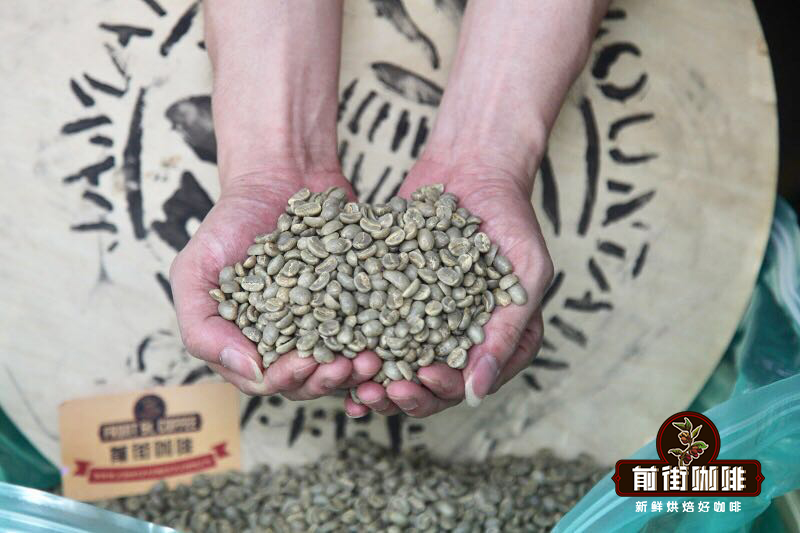Hawaiian coffee beans poisoned by leaf rust what does coffee look like? historical story of the development of leaf rust
According to the Hawaiian Department of Agriculture (HDOA), coffee leaf rust (CLR), which is highly contagious and harmful to crops, has been found in all major islands of Hawaii.
The agency informed the public this week that Hemileia Vastatrix, the pathogen that causes rust, was found in coffee samples from the islands of Kauai and Mockai. After laboratory testing, HDOA believes that some Kauai coffee factories may have been rusty for at least six months.
A coffee farmer on the island of Kauai informed the agency of the possibility of CLR, while samples from Molokai came from wild coffee plants. The agency believes that factories there may have been affected for at least three months.

The disease spread in Hawaii despite strict quarantine measures for agricultural products, including emergency measures following the discovery of leaf rust in Maui in October last year.
By November, the disease was found on the big island of Hawaii. In January, it was found in plants in Oahu and Lanai, and CLR became a major problem at the annual meeting of the Coffee Association of Hawaii last month.
Since its first discovery, the Hawaiian Council of Agriculture (Board) has approved an interim administrative rule that restricts the movement of "coffee plants, plant parts and other CLR hosts" from the affected islands in an attempt to stop the spread of the disease. These restrictions are currently scheduled to expire on November 21, as CLR,HDOA detects statewide that they are being reassessed.

Coffee leaf rust was first discovered in East Africa and Sri Lanka in the 1860s. Since then, it has spread all over the coffee growing world. Infection can spread rapidly, preventing the growth of plant leaves and berries during the infection and in subsequent years.
Smallholder coffee farmers in parts of South America, Central America and Mexico are still suffering from the devastating leaf rust epidemic that prevailed in 2012.
Important Notice :
前街咖啡 FrontStreet Coffee has moved to new addredd:
FrontStreet Coffee Address: 315,Donghua East Road,GuangZhou
Tel:020 38364473
- Prev

Global warming | impact of Climate on Coffee cultivation three difficult problems of Coffee Belt transfer and cultivation
There may be no greater existential threat to coffee and the world as a whole than climate change. We often talk about climate change in coffee, and it is generally believed that global warming will have a negative impact on the way coffee is grown. But how exactly does climate change affect coffee? In order to better understand, let's study some of the ways in which temperature change destroys coffee production.
- Next

McDonald's Coffee Reusable Coffee Cup Program loop Recycling to solve plastic pollution problem
World first: McDonald's UK pilot reusable coffee cup program in September last year, McDonald's, the world's largest restaurant chain, announced that it would try out a reusable packaging scheme in the UK to fulfill its promise. The fast food giant partnered with zero waste delivery platform Loop to launch the first zero waste packaging solution to cover its six outlets in the UK.
Related
- Detailed explanation of Jadeite planting Land in Panamanian Jadeite Manor introduction to the grading system of Jadeite competitive bidding, Red bid, Green bid and Rose Summer
- Story of Coffee planting in Brenka region of Costa Rica Stonehenge Manor anaerobic heavy honey treatment of flavor mouth
- What's on the barrel of Blue Mountain Coffee beans?
- Can American coffee also pull flowers? How to use hot American style to pull out a good-looking pattern?
- Can you make a cold extract with coffee beans? What is the right proportion for cold-extracted coffee formula?
- Indonesian PWN Gold Mandrine Coffee Origin Features Flavor How to Chong? Mandolin coffee is American.
- A brief introduction to the flavor characteristics of Brazilian yellow bourbon coffee beans
- What is the effect of different water quality on the flavor of cold-extracted coffee? What kind of water is best for brewing coffee?
- Why do you think of Rose Summer whenever you mention Panamanian coffee?
- Introduction to the characteristics of authentic blue mountain coffee bean producing areas? What is the CIB Coffee Authority in Jamaica?

